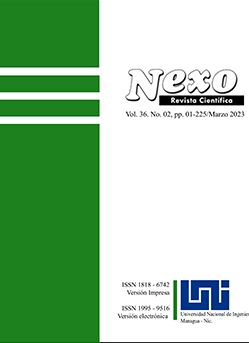Investigating and Modeling the Effect of Using High-strength Concrete on the Behavior of Structures During Earthquakes
DOI:
https://doi.org/10.5377/nexo.v36i02.17408Keywords:
high strength concrete, earthquake, compressive strength, tensile strengthAbstract
One of the issues that most cities in the world are dealing with is the issue of natural disasters. Therefore, it is necessary to carry out detailed studies to identify the sources of earthquakes with the possibility of producing long-lasting earthquakes in Iran, and the effects of durability on reducing the resistance of structures should be taken into account when designing. This issue may not only cause damage to structures in high-durability earthquakes, but also can lead to their damage in the event of relatively strong aftershocks. Considering the importance of earthquake resistance of buildings in seismic areas, improvement of concrete properties has a special place. Currently, based on the common technology of concrete, the production of concrete with high compressive strength is far from expected to be used for the design of common functional structures.
Downloads
1269
Downloads
Published
How to Cite
Issue
Section
License
Copyright (c) 2023 Universidad Nacional de Ingeniería

This work is licensed under a Creative Commons Attribution 4.0 International License.
The authors who publish in Nexo Scientific Journal agree to the following terms:
- Authors retain the copyright and grant the journal the right of the first publication under the license Creative Commons Attribution License, which allows others to share the work with a recognition of the authorship of the work and the initial publication in Nexo Scientific Journal.
- Authors may separately establish additional agreements for the non-exclusive distribution of the version of the work published in the journal (for example, in an institutional repository or a book), with the recognition of the initial publication in Nexo Scientific Journal.
- Authors are allowed and encouraged to disseminate their works electronically (for example, in institutional repositories or in their own website) before and during the submission process, as it can lead to productive exchanges, as well as earlier and greater citation of published works.










